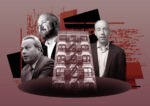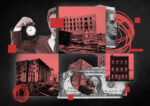As the Rent Guidelines Board readies for next week’s preliminary vote on stabilized rent adjustments, landlords are setting off another round of flares.
If the increase doesn’t cover operating costs, they claim, aging buildings face financial collapse.
“This is not hyperbole,” Jay Martin, who heads owner group the Community Housing Improvement Program said. “You only need to look at the RGB’s own data to see the dire situation these buildings are facing,”
“It looks eerily similar to the financial problems buildings faced in the 1970s and 1980s,” Martin said.
According to data that the board published this month, net operating expenses — a measure of profits that excludes debt payments and reserve funds — slid 7 percent annually in older rent-stabilized buildings outside of Manhattan’s core, defined as south of West 110th Street and East 96th Street.
In the Bronx, that metric fell off a cliff. NOI plunged 18.5 percent in properties built before 1974, which CHIP called a “disturbing decline.”
Deteriorating financials are a facet of the 2019 rent law, which removed all paths to raise stabilized rents, excluding the annual increases by the rent board, which historically fail to match the rising cost of doing business.
The Real Estate Board of New York noted that RGB increases over the last decade have averaged 1.3 percent a year, while expense growth as recorded by the RGB grew by 4.9 percent annually.
Based on the RGB vote on Tuesday, the preliminary rent adjustments will set the range for what the ultimate increase will likely be, which is determined by the board in June.
The group’s reference to the 1970s and 1980s, or what industry folks often call the bad old days, evokes the housing crisis that accompanied the city’s near bankruptcy.
Tenants vacated apartments in the tens of thousands; owners abandoned their buildings, while some landlords even set them on fire for the insurance money.
CHIP is not the first in recent years to warn of history repeating.
Jordan Barowitz, founder of an eponymous advisory firm and a former Durst Organization spokesperson, acknowledged in September that the urban decay of the 1970s and ‘80s would be a “nightmare scenario.”
“But it’s hard not to see it going south,” Barowitz added. “Looking at the data, there’s no reason to think the situation is improving.”
Barowitz referenced a 2023 RGB report that showed in 2021, nearly 9 percent of buildings were distressed, meaning operating and maintenance costs exceeded income. RGB data lags by two years.
2021 marked the fifth straight year distress had risen, but after the 2019 rent law, the growth rate accelerated.
The RGB’s 2024 report showed in 2022 that the distress rate was flirting with 10 percent, a 1-point jump year-over-year and the highest percentage since 2009 — on the heels of the Global Financial Crisis.
Owners have often cited the collapse of rent-stabilized lender Signature Bank, and more recently, New York Community Bank’s disclosure that its multifamily loan book — much of which is rent-stabilized — will experience more distress, as signs that owners are underwater on their mortgages.
Fifty years ago, New York landlords defaulted on their property taxes, forcing the city to seize buildings. Landlords say that the strain today is similar — only now it’s regional banks that are on the hook.
“Remember ‘the Bronx is burning,’” one multi-generational Bronx landlord said, requesting anonymity as he is attempting to refinance a rent-stabilized loan on the brink of default. “Landlords set fire to their own buildings because they were drowning in debt.”
Read more



